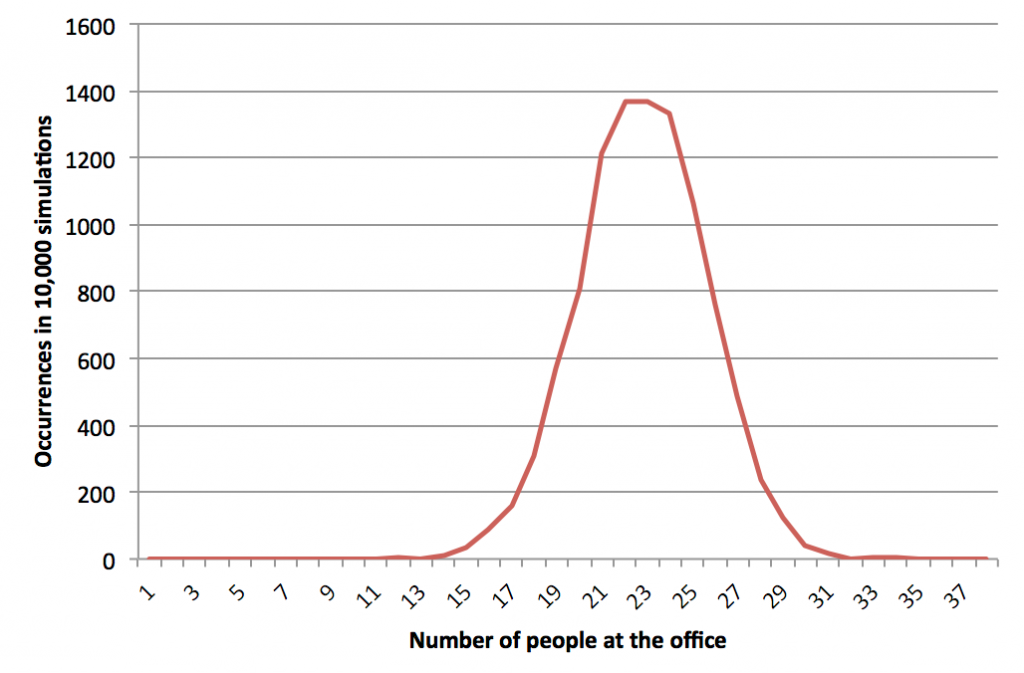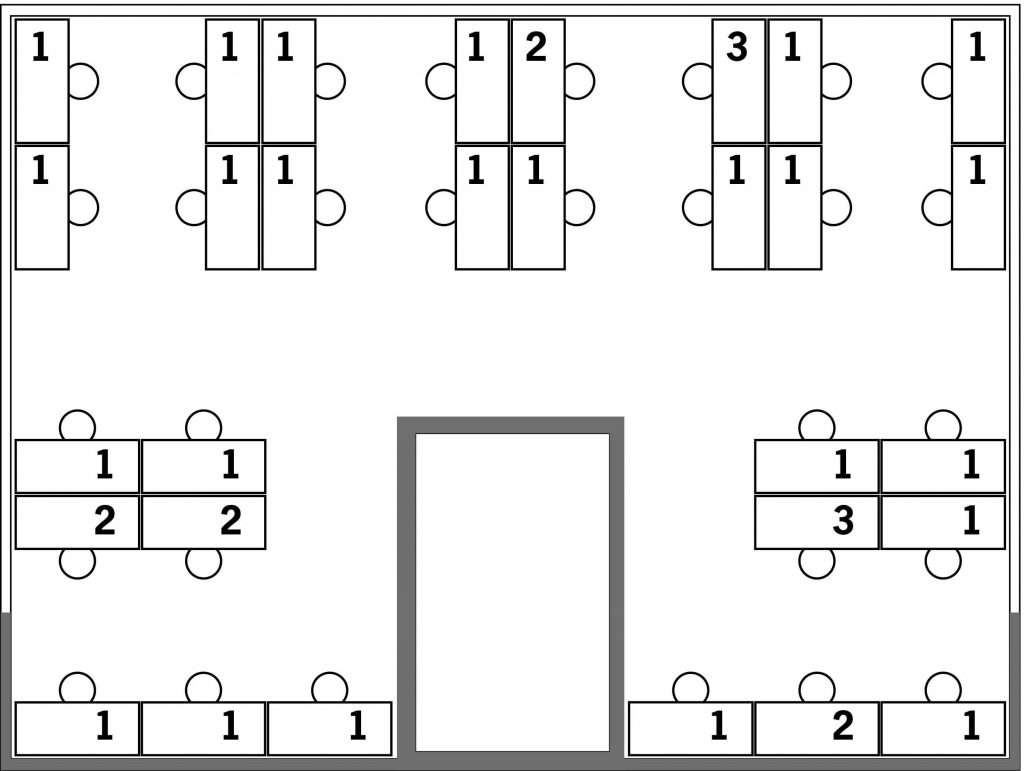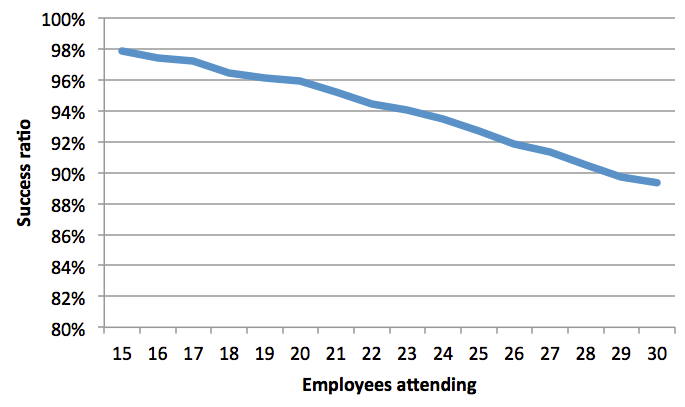The worked example is for an office with 30 workstations (the story about Cleverco described an office with 120 workstations, but a smaller example is easier to illustrate).
Suppose the office has a sharing regime with a workstation:employee ratio of 0.8. Therefore the 30 workstations are shared by 38 employees. This gives the exact ratio 30 / 38 = 0.79.
The 38 employees vary in terms of attendance at the office, due to holidays, illness, flexible working, part-time working, working at client sites, attending courses, etc. The employees’ average attendance is divided into six bands in the Table 1 below, as percentages of working days in a year, or the number of half-days per week they come to the office.
| Average attendance | Number of employees |
| 80% (=8 half-days per week) | 12 |
| 70% (=7 half-days per week) | 4 |
| 60% (=6 half-days per week) | 8 |
| 50% (=5 half-days per week) | 4 |
| 40% (=4 half-days per week) | 8 |
| 20% (=2 half-days per week) | 2 |
| Total | 38 |
From this attendance data, 22.8 employees are expected the office on average, but actual attendance will usually be above or below this average figure. This shown on Graph 1, which is based on a simulation study where each employee decides independent and randomly when he or she will come to the office. If in fact behaviour is non-random, and some days are disproportionately attractive or unattractive to employees, the graph will not follow such a smooth shape.

The graph shows that, in simulation studies, it is extremely unusual for more than 30 out of the 38 employees to attend the office at the same time (about 1 in 500 chance, or once every two years). On this basis the sharing ratio of 0.8 provides sufficient workstations.
But what about workstation preferences? It is usually assumed that workstation preferences are incompatible with workstation sharing, but suppose that each of the 38 employees chooses a preferred workstation; some must choose the same workstation, because there are only 30 in total. Plan 1 shows the number of employees choosing each desk; for most it is only one employee, but for some it is two or occasionally three employees.

When an employee comes to the office, the preferred workstation is always used if it is free; if it is already in use, the employee uses another workstation – as we have seen from the simulated attendance, there will virtually always be free workstations.
The success rate in employees using their preferred workstation was investigated in the simulation study. Four examples are shown on Plan 2 below (green means an employee is used the preferred workstation; red means that an employee’s preferred workstation is in use and an alternative is being used; white means the workstation is vacant). The preponderance of green is immediately evident.

The number of people attending varies in these four examples: A is well above average attendance, B is above average, C is average, and D is below average. The success rate is 100% for D with low attendance, and falls as attendance increase (see Graph 2), but it is still 86% for A with very high attendance. Over 10,000 simulations the average success rate is 94%. Compare this with the usual assumption that preferences have to be abandoned with sharing.

Graph 2: success ratio by number of people attending
Because the success rate is not 100%, some employees have to work at a non-preferred workstation on some occasions; the number of people in this situation is show on Graph 3 – for 85% of days it is 0, 1 or 2 employees, and almost never more than 4.

A key to combining desk-sharing with desk preferences is an efficient pattern of workstation preferences. With 30 workstations for 38 employees, some can be preferred by a single employee; these should be the high-attending employees. The workstations with shared preferences should be associated with low-attending employees. Because they share workstation preferences with other low-attenders, there is a good chance that their preferred workstation will be free on the (relatively few) occasions that they want to use it.
If the pattern of preference was less efficient, with high-attending employees sharing desk preferences, there would be many more disappointments.
MESSAGE: With good management, it is possible to combine workstation sharing and workstation preferences, with a high proportion of employees’ workstation preferences being satisfied.